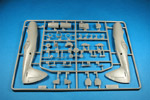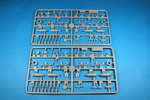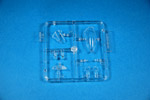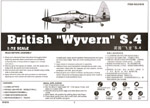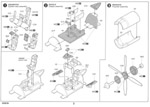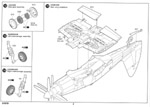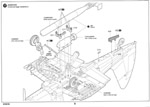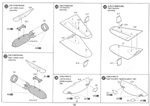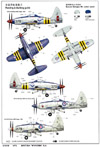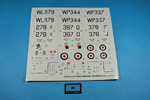Wyvern is without doubt one of the most interesting prop driven planes ever produced. Eliptical wings, fins of the horizontal stabilizers, double contra-rotating propelers characteristics you can't overlook... Designed in 1946, but due to many difficulties entered production in '50s it served for only 5 years until 1958. Only 127 aircraft were produced but we have to thank Trumpeter for releasing it in injection-moulded technology instead of searching for expencive and hard to build vacform or resin kits...
The kit is packed in a sturdy top-opening box as it's common for all the Trumpeter's kits. The kit consists of 5 sprues of light grey plastic packed in 3 bags, one sprue of clear plastic and separately packed decals and instrument dials vinyl film. There are 177 parts + 9 clear parts. You get 3 decal options: 813Sqn, HMS Eagle in 1958,
831Sqn, HMS Ark Royal in 1957 and probably the most famous scheme 830Sqn,
HMS Eagle during the Operation Muskateer (Suez crisis) in 1956 with
yellow/black ID bands on fuselage and wings. Decals appear to be nicely
printed but there's a small number of stencils included and they could
be printed a bit crisper.
Kits panel lines are very nicely engraved and I haven't noticed any
flash or sink marks on noticable places. The cockpit is engineered very
nicely with raised details and the front panel is made out of clear
part. It should be sanded a bit to thin it down and holes for instruments
drilled out, and don't forget to add some belts to the seat.
Trumpeter produced a really great kit of this rather exotic naval attack plane. With its odd lines it'll stand out in many mainly-grey collections, especially if wearing the Suez ID markings. Warmly recommeded to all skills of modellers and everybody interested in naval aviation or odd-looking English aviation designs. Photos and text © 2006 by Sebastijan Videc September 12, 2006 |
||||||||||||||||||


